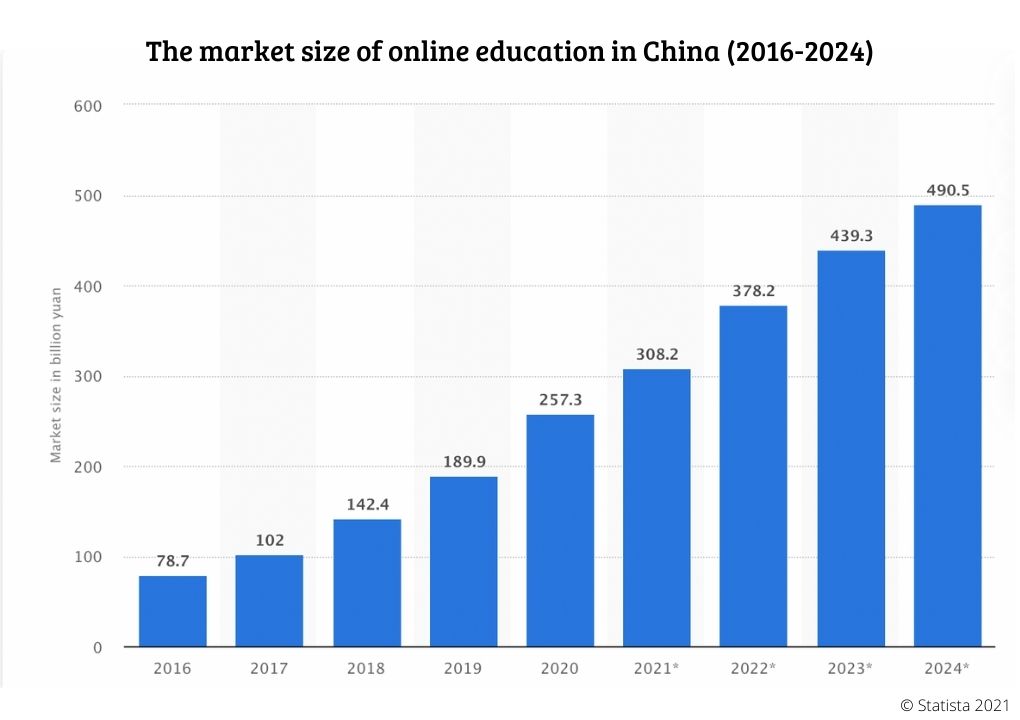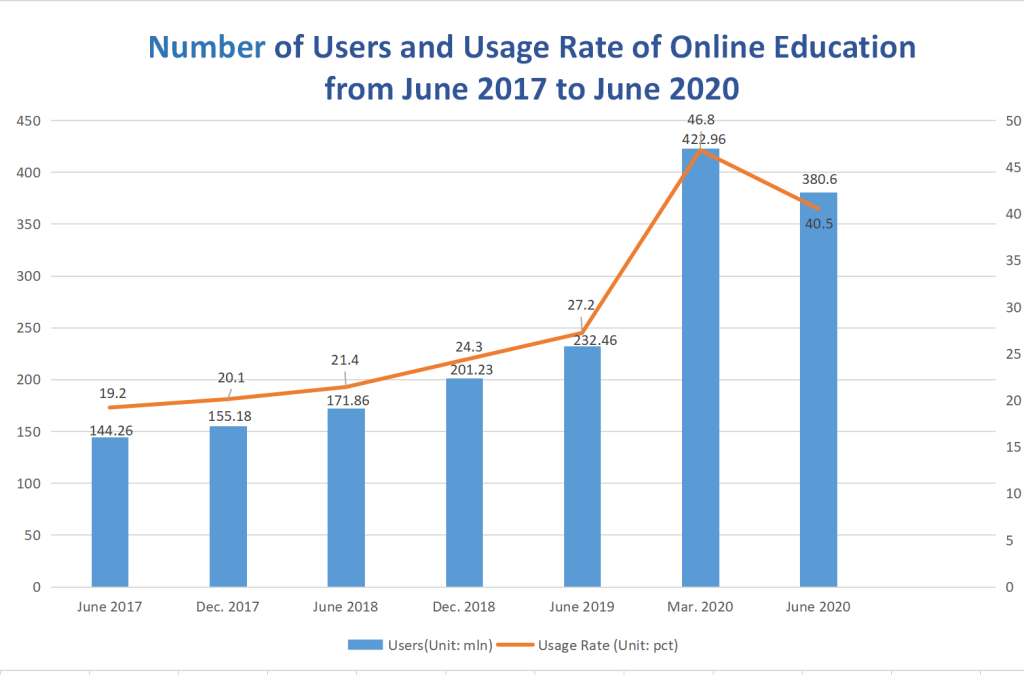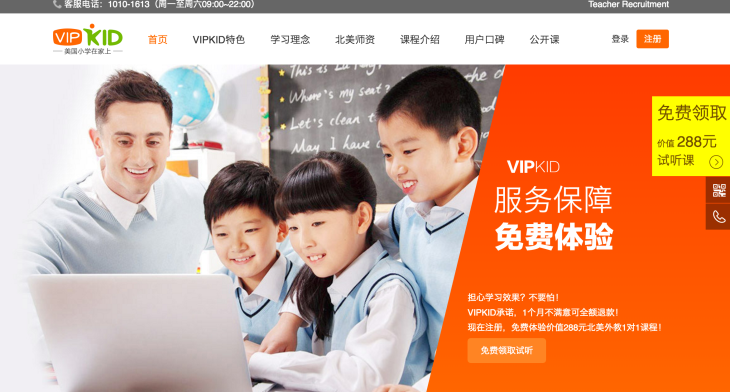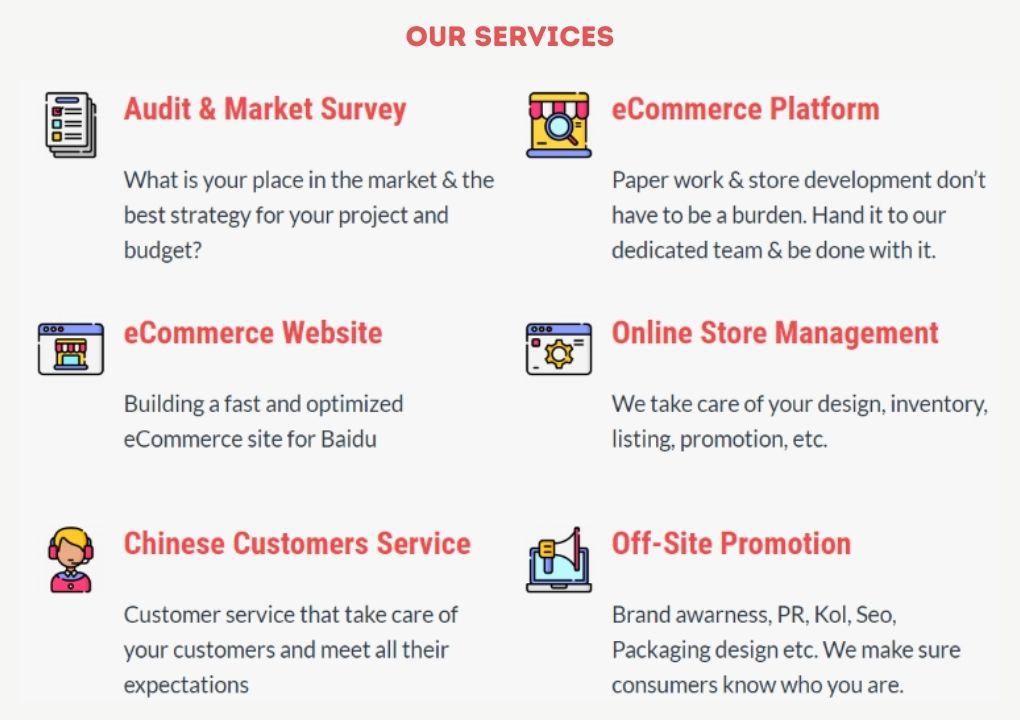Edtech In China: A Very Lucrative Market

Over the past few years, China’s education market has emerged as one of the biggest and most profitable in the world. With more than 423 million users in 2020 alone, it’s no wonder that the edtech industry in China has been flourishing. This market presents enormous opportunities for your business to expand and thrive.
In this blog post, we will explore what makes Edtech in China so unique, including its history, key players, driving forces behind its growth, consumer preferences, and behaviors, regulatory challenges as well as emerging trends and technologies that you should know about when considering entering this exciting market.
Cost-Effective Agency
KPI and Results focused. We are the most visible Marketing Agency for China. Not because of huge spending but because of our SMART Strategies. Let us help you with: E-Commerce, Search Engine Optimization, Advertising, Weibo, WeChat, WeChat Store & PR.
The Booming Edtech Market In China
The edtech market in China is rapidly growing and is expected to continue to do so, with a current value of $69.6 billion in 2021 and projected growth at a CAGR of over 25% from 2021-2026. This growth is being driven by a high demand for innovative learning solutions across all education segments of the Chinese education industry.
Market Size, Projected Growth, And Key Trends

The Edtech market in China has grown significantly in recent years and is expected to continue growing due to several key trends. The current market value is $69.6 billion, making it a highly lucrative market.
| Market Size | Projected Growth | Key Trends |
|---|---|---|
| $69.6 billion current market value | 25%+ CAGR during 2021-2026 | China holds a 45% share of the East Asia Edtech market |
| Adult Edtech sector rapidly evolving | RMB288.1 billion (US$44.6 billion) projected online adult learning market value | Innovative technologies such as AI and VR being widely adopted |
| Increased government support and investment | Continued strong demand for quality online learning resources | Shift in consumer preferences towards personalized learning experiences |
The trends and projections regarding the Chinese Edtech market can guide you in making informed decisions about the best strategies to enter the market and take advantage of its significant growth potential.
Driving Forces Behind The Market Growth
The Chinese Edtech market has experienced incredible growth, and this can be attributed to government policies that encourage innovation in education and substantial investments in the sector.
Additionally, the abundance of venture capital available for Edtech startups and the vast market of over 400 million students seeking innovative ways to enhance their learning experience are driving forces behind the market’s growth.
The trend of consuming high-quality products with better value for money has increased the demand for advanced educational tools and solutions.
China has many institutions dedicated to piloting new educational technologies, making it an attractive market for foreign companies looking to expand their offerings globally.
Impact Of COVID-19 On The Edtech Market

The COVID-19 pandemic has had a significant impact on businesses worldwide, including the edtech market in China, which has experienced a boost in growth.
With the closure of physical campuses, online learning became a necessity, resulting in a 20% growth in the online education sector in China in Q1 2020.
Prior to the pandemic outbreak, the edtech market in China had been struggling due to high customer acquisition costs.
Key Players In The China Edtech Industry
Some of the top companies dominating the Chinese edtech industry include TAL Education Group, New Oriental Education & Technology Group, and GSX Techedu Inc.
Overview Of Top Companies And Startups
Here are some of the top companies and startups leading the industry:
- Tencent Education
- Yuanfudao
- Zuoyebang
- VIPKid
- 17zuoye
- Liulishuo
- Knowbox
- QuantaSing
The companies mentioned have achieved rapid growth and dominate the market with their innovative products and services.
For instance, Yuanfudao offers online courses for primary and secondary school students, Tencent Education provides education resources through its platform using its massive user base, and VIPKid connects Chinese children with North American teachers through virtual classrooms for English language learning.
Liulishuo is a popular AI-powered English learning app with over 100 million registered users that uses speech recognition technology.
The education sector presents significant opportunities for foreign companies to enter the market, as demonstrated by Liulishuo and other leading companies.
Competitive Landscape Analysis
The edtech market in China is highly competitive and fragmented, with various players based on different business models and segments.
Beijing is a key city for edtech, with many players competing in this market, including TAL Education Group and New Oriental Education & Technology Group, which are some of the largest education service providers covering K-12 tutoring services along with online courses and offline educational programs.
In contrast, 17Zuoye provides homework assistance services while Yuanfudao offers live-streaming classes and personalized tutoring services using AI technology.
Case Studies Of Successful Foreign Edtech Companies In China
Several foreign Edtech companies have managed to penetrate the Chinese market and have established themselves as significant players in the industry.
For example, VIPKid is an online English education platform that connects North American teachers with Chinese students aged 4-12.

Another successful foreign Edtech company is Udacity. This Silicon Valley-based startup partnered with Baidu (a major search engine in China) to offer AI courses for the Chinese market.
Understanding The Chinese Edtech Consumer
The Chinese Edtech consumer is typically young and tech-savvy, with a strong desire for quality education that can give them an edge in China’s highly competitive job market.
Demographics And User Behavior

In China, internet users aged 10-39 make up over 70% of online education users, with a slight majority being female.
Additionally, urban areas have a higher demand for e-learning products than rural areas due to greater access to technology.
Chinese consumers value performance pressure and job readiness when selecting educational products. They prioritize core subjects such as math and science since they are perceived as having better employment prospects in competitive industries like finance and technology.
As a result, there is high demand for gamified learning solutions that enhance one’s understanding of key topics while providing practical skills needed for future careers.
Consumer Needs And Preferences
Chinese parents highly value their children’s education and are willing to invest in it, but they also expect high-quality and personalized learning experiences.
Education technology products need to cater to the varying expectations of different regions in China, with urban students preferring mobile learning applications and rural students benefiting more from offline content delivery methods due to lower internet connectivity levels.
In Asian cultures such as China’s Confucian heritage culture, face-to-face interactions are highly valued. However, consumers still value social connections through online communities where they can interact with classmates, teachers, and other users who share similar interests related to education.
Case Studies Of Products That Have Resonated With Chinese Consumers

VIPKid, an English-language learning platform that connects U.S. teachers with students in China, is an example of an Edtech product that has resonated with Chinese consumers.
The company has had significant growth since its launch in 2013 with over 800,000 paying students. Yuanfudao, an online tutoring platform that uses AI technology for personalized learning plans and feedback, has also gained popularity in China.
Personalization is crucial in the Chinese Edtech market due to the diverse population of learners with unique needs and preferences. Successful products cater to individualized instruction and engaging content through innovative means such as AI-powered platforms or gamification elements.
Future Of Edtech In China
The future of edtech in China looks promising, with opportunities for foreign companies to grow and innovate as emerging technologies such as AI and VR gain traction.
Opportunities For Foreign Companies
China is a promising market for foreign edtech companies due to the government’s investment in education and the expected rapid growth of the industry.
The demand for quality education creates opportunities for innovative platforms catering to different learning styles.
However, success in China requires a solid understanding of cultural differences and regulatory challenges. Partnering with local organizations or creating tailored products for Chinese consumers can help penetrate the competitive landscape.
Emerging Trends And Technologies (AI, VR, Etc.)
Here are some emerging trends to consider when exploring the Chinese market:
- Artificial Intelligence (AI) – AI-powered adaptive learning platforms and intelligent tutoring systems are gaining popularity in China, offering personalized learning experiences for students.
- Virtual Reality (VR) – VR technology is being used to create immersive learning experiences that simulate real-world scenarios. This technology has potential applications in fields such as medical training and machine repair.
- Mobile Learning – With over 1 billion mobile phone users in China, mobile learning is becoming increasingly popular. E-learning platforms are developing mobile apps that allow learners to access educational content on the go.
- Robotics – Educational robots are being introduced into classrooms as teaching aids and companions for students. These robots can provide personalized feedback and support, enhancing the learning experience.
- Social Learning – Social media platforms are being used as channels for social learning, allowing learners to connect with peers and experts from around the world.
- Gamification – Gaming elements are being incorporated into educational software to make learning more engaging and interactive for students.
- Blockchain Technology – Blockchain technology is being explored as a way to verify academic credentials and prevent fraud in the education sector.
By keeping up with these emerging trends, you can better position your company in the rapidly growing Chinese edtech market.
Outlook For The Industry’s Future In China
The EdTech market in China is the largest in the world and has great potential for growth, especially with the increasing demand for AI and VR technologies.
Foreign companies should invest in research and development efforts that cater to these emerging technologies and develop marketing strategies that cater to Chinese consumers’ unique needs and preferences in order to succeed in the market.
Practical Steps For Entering The Chinese Edtech Market
The key to entering the Chinese edtech market is to build partnerships with local organizations, adapt products to meet Chinese consumers’ needs, and implement unique marketing and distribution strategies.
Building Partnerships And Collaborations
Here are some practical steps for achieving success:
- Research potential partners:the strategy involves finding partners such as local edtech firms, schools, and government agencies to help navigate cultural and regulatory challenges.
- Attend industry events: Attending industry events offers networking opportunities and keeps informed on edtech market advancements.
- Customize your product for the Chinese market: It is recommended to conduct extensive research on consumer preferences, cultural nuances, and regulatory requirements that may impact the product design before approaching potential partners.
- Build trust through face-to-face communication: In China’s business culture, face-to-face communication is highly valued when building relationships. Take time to visit potential partners and demonstrate commitment to partnership goals.
- Invest in local talent: Hiring local talent with knowledge of the Chinese language and culture can help you build strong partnerships and navigate cultural differences more effectively.
- Be flexible and open-minded: The Chinese business world operates differently from Western countries. Embrace this difference by being flexible and open-minded when it comes to business practices, negotiations, and expectations.
By implementing these practical steps in building partnerships and collaborations in China’s edtech market, you will be positioning yourself for success in a lucrative sector with enormous investment potential.
Localizing Your Product For The Chinese Market
Localizing the product is crucial as it involves tailoring the product to meet the specific requirements and preferences of Chinese consumers.
Localization requires a comprehensive understanding of cultural distinctions, language translation, and consumer behavior.
Successful localization strategies can differ depending on the industry or product. For instance, foreign Edtech companies in China have succeeded by integrating culturally relevant content and hiring local teachers.
Working with a localization team of experts who comprehend both cultures can guarantee effective localization. They translate content while considering cultural adaptation that will appeal to Chinese consumers.
Marketing And Distribution Strategies

Here are some well-planned distribution and marketing strategies to consider:
- Modular approach: Break down your product into modules that cater to specific educational needs in China.
- Partnering with local businesses: Partner with local businesses who understand the market and have established networks that can help you gain entry into the market.
- Digital marketing channels: Utilize digital marketing channels such as WeChat, Baidu, and Douyin, which are highly popular among Chinese consumers.
- Sales channels: Utilize online sales platforms such as Alibaba, JD.com, or Tmall for cost-effective distribution.
- Strategic pricing: Offer competitive pricing while considering the cost of entry into the market alongside competing products.
- Localization of content: Adapt your product content to suit Chinese culture and language preferences.
- Building trust: Establish credibility with strong references from reputable institutions or education experts.
Entering the Chinese EdTech market requires much planning in terms of research and navigating cultural differences when creating a strategy for successful Market Penetration in the country’s vast marketplace.
We are your local partner in China!
The EdTech industry in China is a booming market with great potential for foreign companies, despite the challenges posed by local regulations and cultural differences.
Education has always been a vital part of Chinese culture, and as such, there is a growing demand for innovative learning solutions that cater to the diverse needs of users across various education levels and segments.
This presents a lucrative opportunity for companies willing to establish strong partnerships and navigate the local market.

We are a China-based marketing agency offering cost-effective solutions to foreign brands interested in tapping into the Chinese market. Our team of Chinese and foreign experts has the experience and know-how needed to succeed in this lucrative, yet complicated market.
Gentlemen Marketing Agency offers many digital marketing and e-commerce solutions, such as web design, e-commerce and social media marketing strategies, localization, market research, KOL marketing, and more.

Don’t hesitate to leave us a comment or contact us, so that we can schedule a free consultation with one of our experts, that will learn about your brand and present you the best solutions for your China market strategy.







